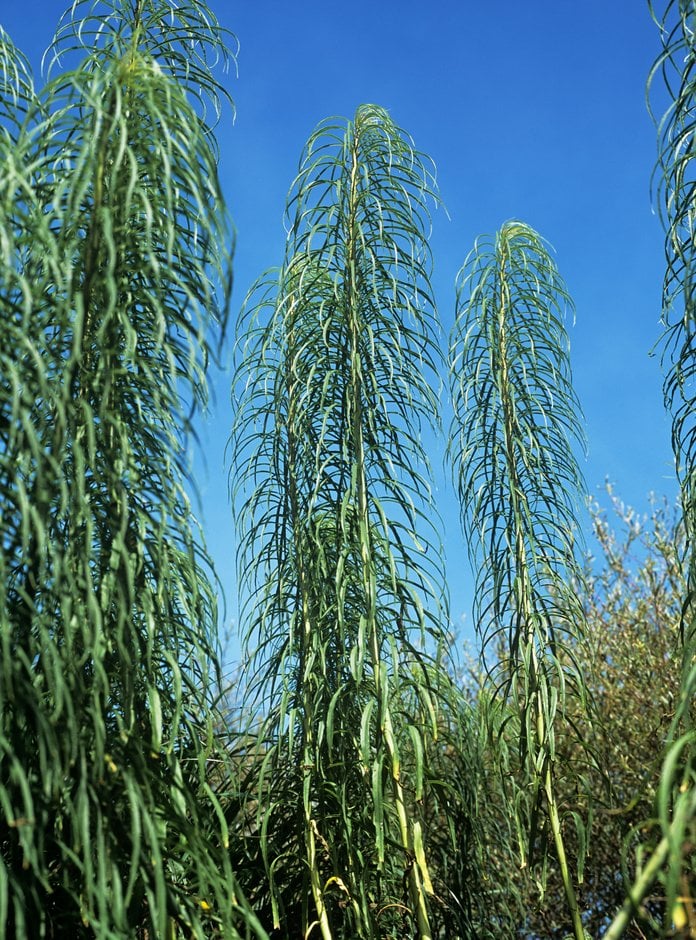Helianthus salicifolius
willow-leaved sunflower
A vigorous perennial forming a substantial clump of erect stems, with narrow, arching leaves and large sprays of brown-centred yellow daisies 5-7cm wide opening in early autumn; grown largely for foliage effect
Synonyms
Helianthus salicifolius var. orgyalisHelianthus orgyalis
Size
Ultimate height
1.5–2.5 metresTime to ultimate height
2–5 yearsUltimate spread
0.5–1 metresGrowing conditions
Moisture
Moist but well–drainedpH
Alkaline, NeutralColour & scent
| Stem | Flower | Foliage | Fruit | |
| Spring | Green | |||
|---|---|---|---|---|
| Summer | Green | |||
| Autumn | Yellow | Green | ||
| Winter |
Position
- Full sun
Aspect
South–facing or West–facing
Exposure
Exposed or Sheltered Hardiness
H5Botanical details
- Family
- Asteraceae
- Native to GB / Ireland
- No
- Foliage
- Deciduous
- Habit
- Bushy
- Genus
Helianthus can be tall, erect annuals, tuberous or rhizomatous perennials, with coarse simple leaves and large daisy-like flower-heads
- Name status
Correct
- Plant range
- USA
How to grow
Cultivation
Requires a moderately fertile, moist but well-drained, alkaline to neutral soil in full sun
Propagation
Propagate by seed or division. Divide established clumps every 2-4 years to both increase plants and retain vigour. See sowing seeds indoors for further advice
Suggested planting locations and garden types
- City and courtyard gardens
- Coastal
- Cottage and informal garden
- Flower borders and beds
Pruning
Cut back old stems after flowering as they die down for the winter
Pests
Susceptible to slugs
Diseases
Powdery mildews and sclerotinia diseases may be a problem
Love gardening
Sign up to receive regular gardening tips, inspiration, offers and more
View our Privacy Policy
Get involved
The Royal Horticultural Society is the UK’s leading gardening charity. We aim to enrich everyone’s life through plants, and make the UK a greener and more beautiful place.

